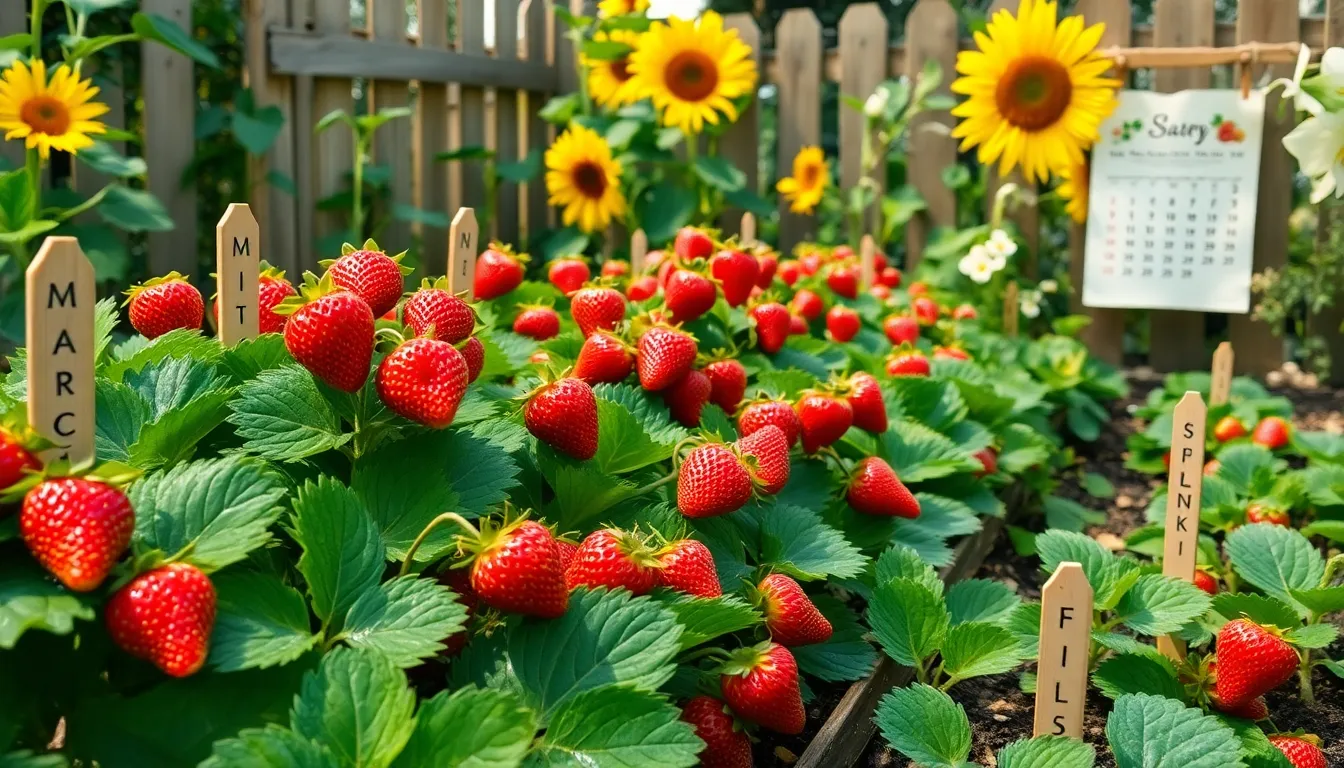There’s something undeniably magical about plucking a ripe strawberry straight from the vine, its sweetness singing of summer’s warmth and sun-drenched days. For both the green-thumbed veteran and the eager novice, cultivating strawberries at home offers a delightful blend of reward and challenge, promising not only the joy of homegrown fruit but also the satisfaction of nurturing a plant from root to berry. Whether you’re nestled in a city apartment with a cozy balcony or tending a sprawling country garden, knowing when to plant strawberries can be the key to a bountiful harvest.
Understanding the right timing for planting strawberries is crucial to maximizing their growth potential and ensuring a fruitful yield. This article will guide you through the seasonal rhythms that strawberries follow, helping you align your planting schedule with nature’s cues. Along the way, we’ll explore the different types of strawberries—June-bearing, everbearing, and day-neutral—and how each type demands its own unique timing and care. By the end of this read, you’ll have a clear roadmap to plant your strawberries with confidence, so they flourish in your care.
As we delve into the specifics, you’ll discover practical tips tailored to your gardening experience, whether you’re just starting out or have been cultivating crops for years. From soil preparation to selecting the perfect varieties for your climate, each step will be laid out with clarity and encouragement. So, grab your gardening gloves and your favorite sun hat—it’s time to embark on a strawberry-growing adventure that promises to transform your home garden into a haven of juicy, ruby-red delights.
Ideal Planting Seasons Explained
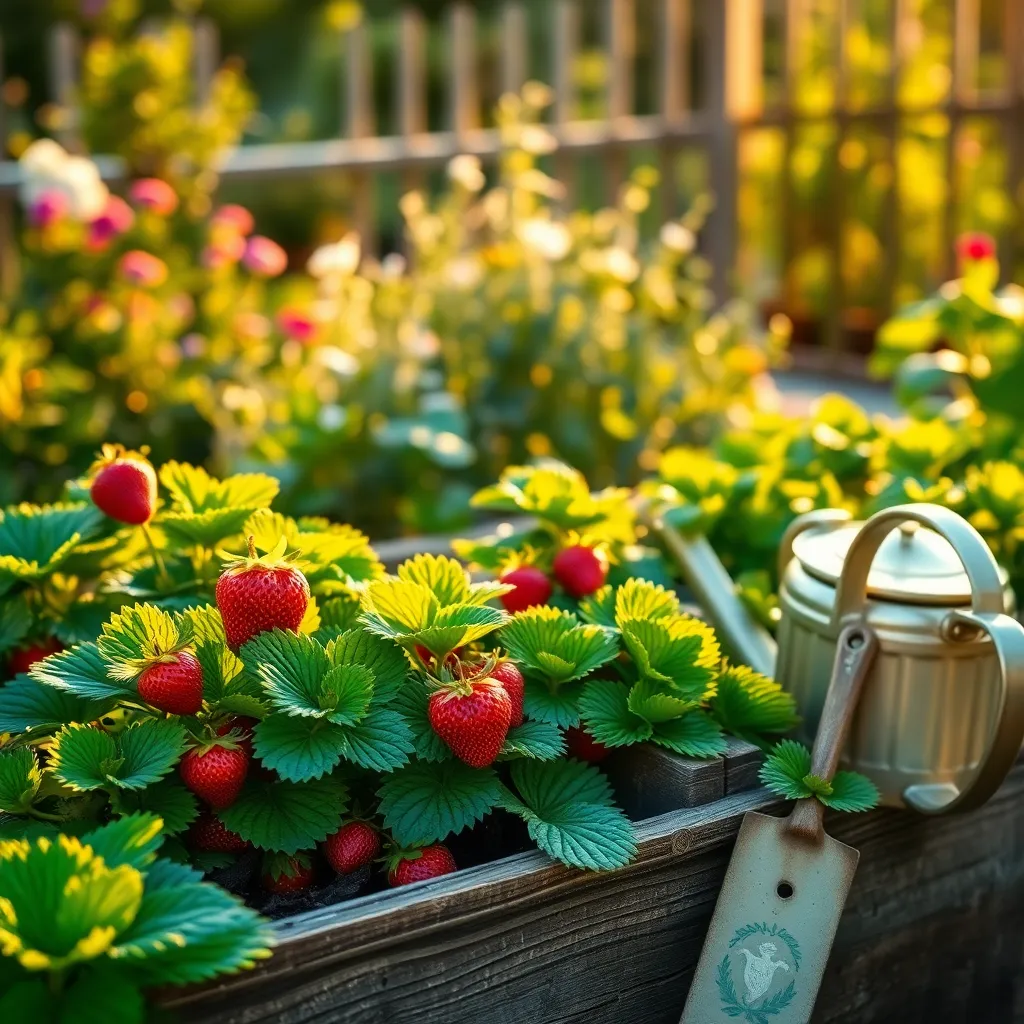
Growing strawberries at home is a rewarding endeavor that requires understanding the ideal planting seasons. Typically, the best time to plant strawberries is in the early spring when the soil is workable and temperatures are cool.
For those in milder climates, fall planting can also be successful, giving plants a head start before spring. In this case, make sure your soil has good drainage and is rich in organic matter to support healthy root development.
Strawberries thrive in full sun, so choose a location that receives at least six hours of direct sunlight daily. If you’re planting in containers, ensure they have adequate drainage holes and use a high-quality potting mix.
Watering is crucial, especially during the first few weeks to help the plants establish. Aim to keep the soil consistently moist but not waterlogged, and consider using mulch to retain moisture and suppress weeds.
- Soil Preparation: Mix in compost or well-rotted manure to enrich the soil.
- Spacing: Space plants approximately 12 inches apart to allow for growth and air circulation.
- Advanced Tip: Consider using row covers for protection against late frosts and pests.
Regular maintenance will lead to a bountiful harvest. Trim runners as they appear to direct energy back into fruit production, and watch out for signs of pests or disease.
Understanding Climate for Growth
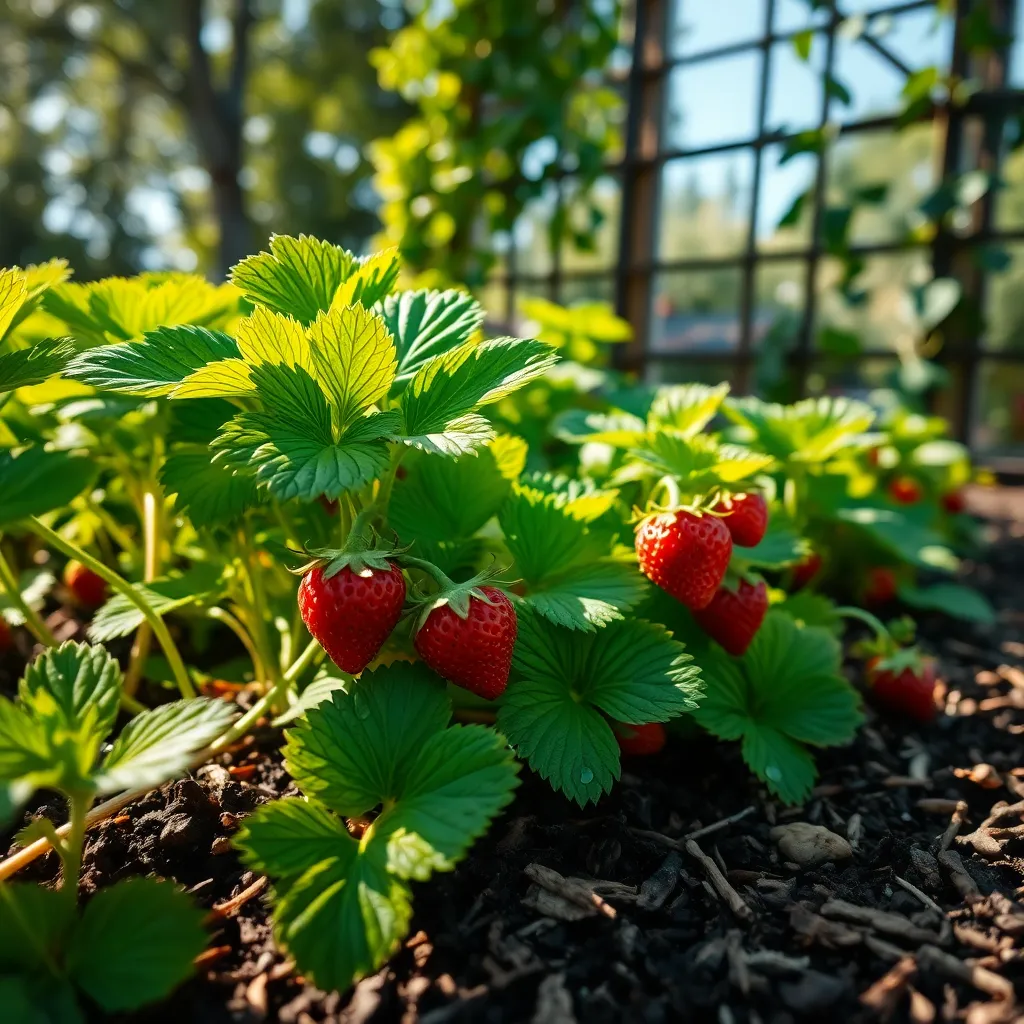
Understanding the climate is crucial for growing strawberries successfully at home. Strawberries thrive in temperatures ranging from 60 to 80 degrees Fahrenheit, making them ideal for planting in the spring or fall, depending on your region.
Before planting, consider your local climate and how it aligns with strawberry growth requirements. In regions with mild winters, strawberries can be planted in late fall, allowing them to establish before the warmer spring months.
If you live in a colder climate, start your strawberries indoors or in a greenhouse to give them a head start. When the risk of frost has passed, transfer them outdoors to a sunny spot with well-draining soil.
Ensure your soil is rich in organic matter, which helps retain moisture and provides nutrients. Regular watering is essential, but be cautious to avoid waterlogging; strawberries prefer slightly moist but well-drained soil conditions.
For those with experience, consider using row covers to protect your strawberries from unexpected cold snaps. This practice can extend your growing season and improve yields by providing a stable micro-climate for your plants.
Preparing Soil for Strawberries

To cultivate thriving strawberry plants, it is essential to prepare the soil with care. Start by selecting a location that receives full sun and has good drainage, as strawberries dislike waterlogged conditions.
Loamy soil enriched with organic matter, such as well-rotted compost, provides an ideal growing medium for strawberries. Aim for a slightly acidic pH between 5.5 and 6.8, as this promotes optimal nutrient absorption.
Before planting, remove any weeds or debris, which can compete with your strawberry plants for nutrients and water. Consider incorporating a balanced slow-release fertilizer into the soil, ensuring your plants have the necessary nutrients throughout their growth cycle.
For advanced gardeners, consider using raised beds or mounds to improve drainage and soil warmth in cooler climates. Additionally, mulching with straw or pine needles can help retain moisture and suppress weeds, creating a more favorable environment for your strawberries to flourish.
Planting Techniques for Success
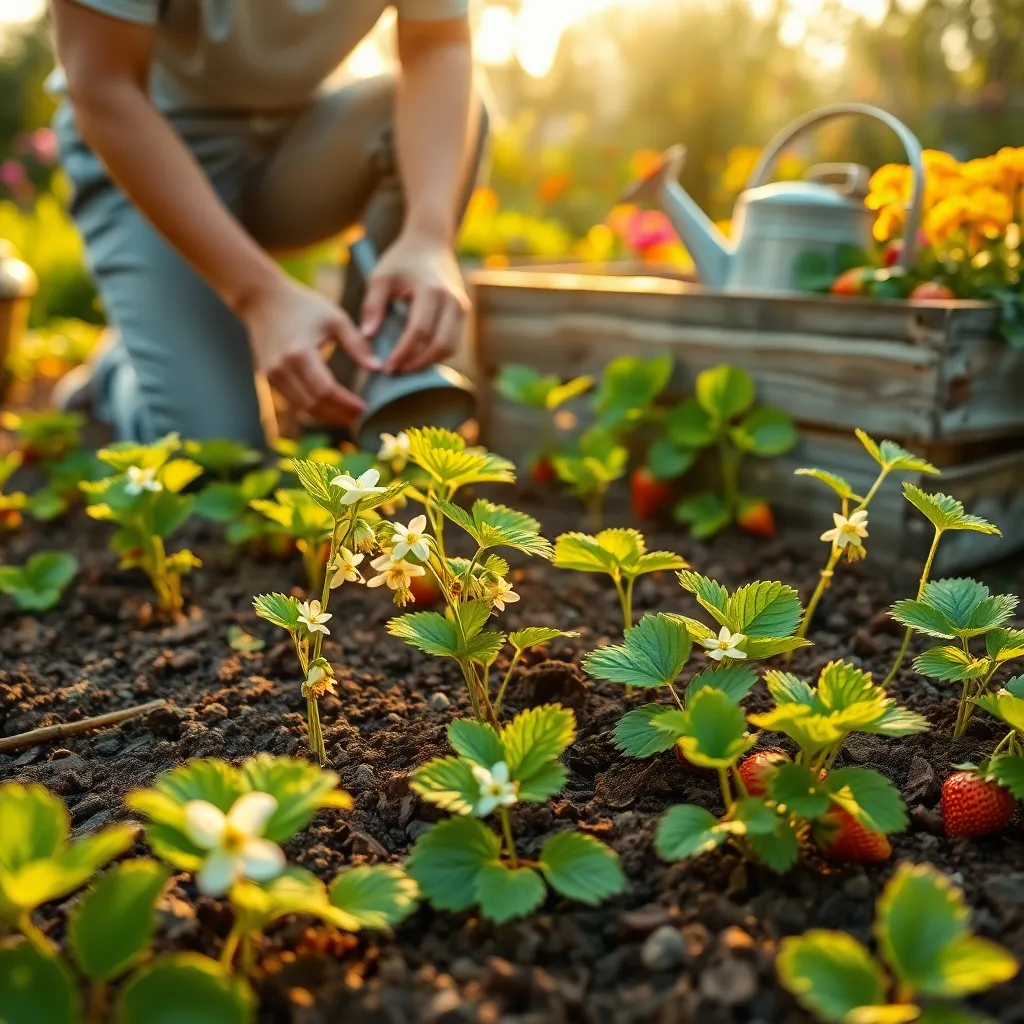
When you’re ready to plant strawberries, start by choosing a sunny spot in your garden, as strawberries thrive in full sunlight. Aim for at least six to eight hours of sunlight daily to ensure the plants produce juicy, sweet fruits.
Prepare your planting area by spacing the strawberry plants approximately 12 to 18 inches apart. This spacing allows for adequate air circulation, which is crucial for preventing fungal diseases.
Before planting, soak the roots of bare-root strawberry plants in water for about 20 minutes. This rehydration step is vital to help the plants establish quickly once in the ground.
Plant the strawberries with the crown at soil level to prevent rot and ensure healthy growth. If the crown is buried too deep, it can lead to poor fruit production and plant health.
Water the newly planted strawberries thoroughly and maintain consistent moisture, especially during dry spells. Aim to keep the soil consistently damp but not waterlogged, as overwatering can lead to root rot.
Mulching around your strawberry plants with straw or pine needles helps retain soil moisture and keep weeds at bay. This added layer also protects the developing fruits from soil contact, keeping them clean and reducing the risk of rot.
Seasonal Care and Maintenance
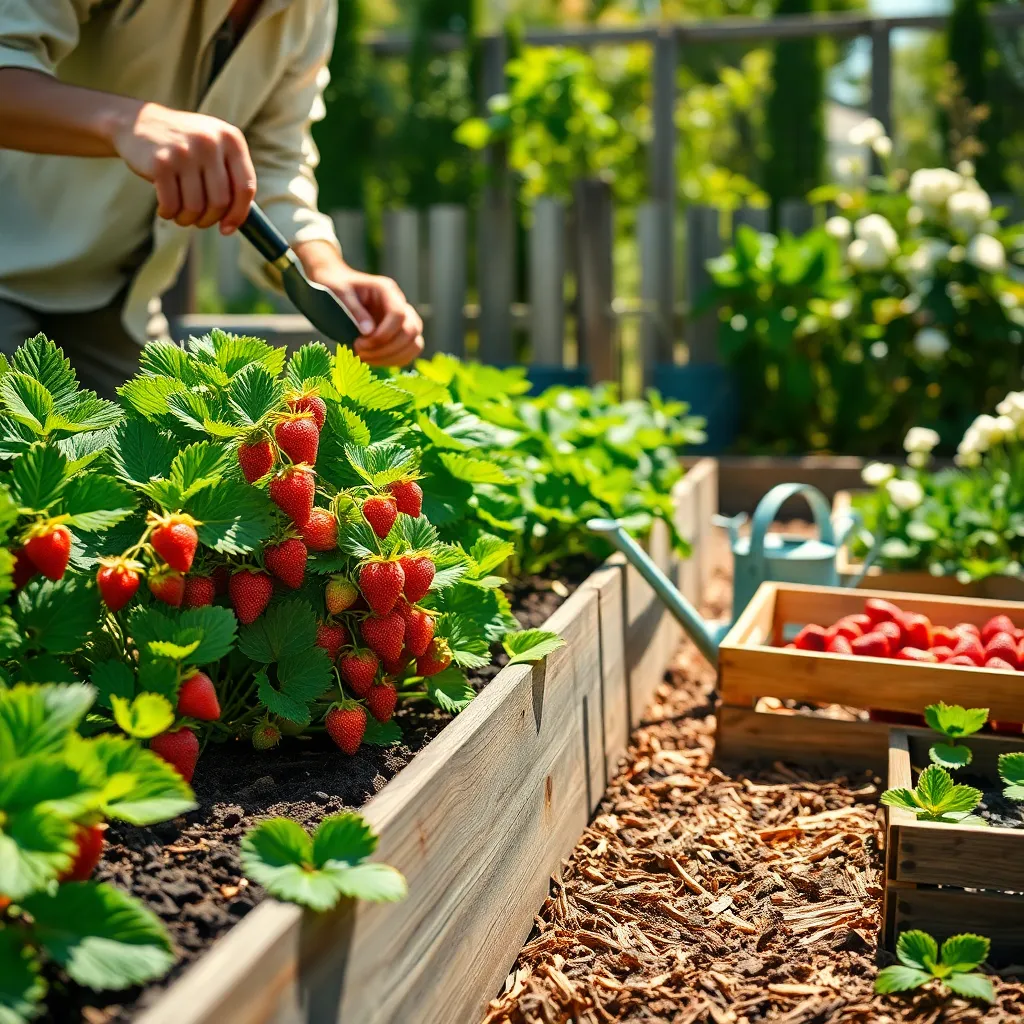
As strawberries flourish, seasonal care is essential to ensure a bountiful harvest. In spring, focus on removing any dead leaves or debris to promote good air circulation around the plants.
Encourage strong growth by applying a balanced fertilizer every few weeks during the growing season. A blend such as 10-10-10 can provide the necessary nutrients, but always follow the recommended application rates to avoid over-fertilization.
Maintaining consistent moisture is crucial for strawberries, especially during fruiting. Water the plants deeply once a week, more often in particularly dry conditions, ensuring the soil remains consistently moist but not waterlogged.
In summer, mulch around the plants with straw or pine needles to help retain moisture and suppress weeds. This will also keep the fruit clean and prevent rot by keeping them off the soil’s surface.
As autumn approaches, prepare your plants for the colder months by reducing the watering frequency. Trim back any remaining runners, and apply a layer of mulch to protect the roots from freezing temperatures.
For those in colder climates, consider covering your strawberry beds with floating row covers or burlap for additional insulation. This simple step can help prevent frost damage and give your plants a head start in the spring.
Conclusion: Growing Success with These Plants
In exploring the delightful journey of growing strawberries at home, we’ve uncovered five key relationship concepts: nurturing your connection with patience, understanding the seasons of growth, balancing support with independence, embracing change, and celebrating the fruits of your labor. These principles not only apply to gardening but also resonate deeply in our interpersonal relationships. Just as strawberries thrive with the right care and environment, so do our relationships when we invest time and effort into their growth.
As your actionable next step, consider dedicating a day to nurture a relationship that matters to you. Whether it’s planting a new seed of understanding or simply spending quality time, take a moment to cultivate connection today.
Remember to bookmark this article—it’s a guide you’ll want to reference as you continue nurturing both your garden and your personal bonds.
Looking ahead, your success in relationships is built on consistent care and attention, much like a thriving strawberry patch. Empower yourself with the knowledge that every step you take enriches the soil of your relationships, promising a bountiful future. Let’s grow together!

